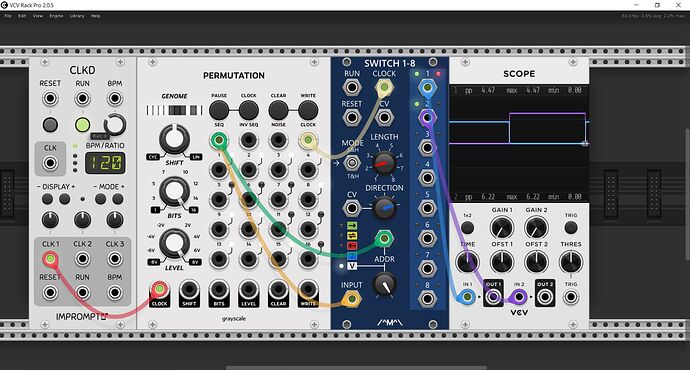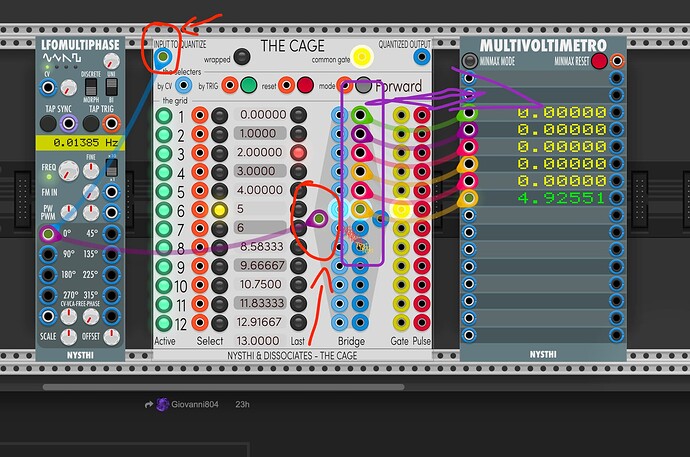Thank you! A lot of cool techniques, nice!
In the meanwhile I tried again with TheCage and stopped when I finally realized that’s more a scale quantization tool, and even after changing the thresholds, I could not make the address work correctly.
Then I went back to CM Switch 1-8, and made it work!
Although it is still a linear split, therefore I’ll dive to read more carefully your suggestions, to explore non-linear ones.
Anyway, working on your previous suggestion of scaling the address cv, I realized that it could be done on the switch itself, by fiddling with the address knob, and leaving the number of steps to max.
On the Perm I have 0-3v in output, and I tweaked the address knob, with the help of @synthi Multivoltimetro (Thank you! I love the Min-Max function, it was crucial!) until I found the split I liked.
If I change the output range of the Perm, I have to repeat the process to find the new split. If the out max is 8v, the address knob goes to 3.1 (strange value…), for 3v is 8.3
I started first with the idea of the octave split, but the nonlinear sounds more fun.
I also learned the lesson of having to use gates for the output CVs, or when they drop to 0v I get an unexpected note.
Back to one of your comments, what do you suggest I should use to map the output of Perm to either log, exp, or any crazy function, why not? In a VST I just draw a curve on a keyboard and voila’ it’s done, but in VCV/Eurorack?




